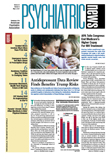Evidence continues to strengthen the theory that when individuals abuse alcohol or other substances, their partners often do so as well.
The latest study to add credence to this finding was headed by Nancy Low, M.D., formerly of the National Institute of Mental Health and now an assistant professor of psychiatry at McGill University in Montreal. Results are in press with the Journal of Psychiatric Research.
A total of 255 people were recruited for the study from a local community by random-digit dialing or from clinics within that community treating individuals for substance abuse or anxiety disorders.
Each subject was evaluated for substance abuse/dependence, anxiety disorders, or other Axis I psychiatric disorders by clinically trained interviewers. They made the assessments using the Schedule for Affective Disorders and Schizophrenia (SADS), current and lifetime versions, which had been modified to incorporate DSM-III and DSM-III-R criteria and to include detailed information about substance use and interrelations between substance use and anxiety disorders. The investigators found that of the 255 subjects, 121 were substance abusers, 74 had an anxiety disorder, and 60 had no Axis I disorders and thus served as controls.
The interviewers also used the SADS to evaluate the spouses of the 255 subjects for substance abuse/dependence, anxiety disorders, or other Axis I psychiatric disorders. The researchers then determined how many of the individuals who had a substance abuse or anxiety disorder or no Axis I illness had a spouse with the same psychiatric profile or a different profile.
One of the more interesting findings to emerge from this analysis was that 38 percent of substance abusers had a spouse who abused substances, compared with only 12 percent of controls. In contrast, only 24 percent of individuals with signs of an anxiety disorder had a spouse who also appeared to have an anxiety disorder, which was comparable to the 20 percent rate for spouses in the control group.
So it looked as though substance abusers often were married to abusers and that the chances of this happening seemed to be greater than the chances of people with serious anxiety being married to spouses with serious anxiety.
But actually what were the chances? When the researchers undertook further analyses, they found that such a likelihood was significant: the chance of spouses of substance abusers also being substance abusers was eight times greater than the chance of the spouses of nonabusers being substance abusers. Moreover, this finding meshed with those of previous investigations that found an odds ratio for spousal concordance in substance abuse of between 3 and 12. In contrast, Low and her colleagues could find no spousal agreement for anxiety disorders. Previous inquiries that looked for such a link also failed to find one.
So if substance abusers are often married to substance abusers, the question is why. Low and her colleagues found that 71 percent of individuals who had substance abuse problems had developed them before “tying the knot,” and that 64 percent of spouses who abused substances had also done so before marrying the current partner. This finding implied that one abusing partner did not “infect” the other, but rather that there was something about their premarital status that brought them together. But what was it? A shared passion for alcohol or some other substance? A mutual expectation that heavy drinking or other substance abuse was a part of life, therefore making them feel at ease with each other? Perhaps, Low told Psychiatric News, but it is also possible that abusers may end up paired with abusers because nonabusers shun them as partners.
These findings have practical implications, the researchers suggested. For example, when patients abuse substances, clinicians should not automatically assume that their spouses will help get them on the road to recovery because the spouses themselves may be substance abusers. Also, if two abusers marry, their offspring may be at high risk for inheriting genes that contribute to the development of substance abuse.
An abstract of “Spousal Concordance for Substance Use and Anxiety Disorders” can be accessed at<www.sciencedirect.com> by clicking “Browse A-Z of journals,” then “J,” then“ Journal of Psychiatric Research.” ▪
